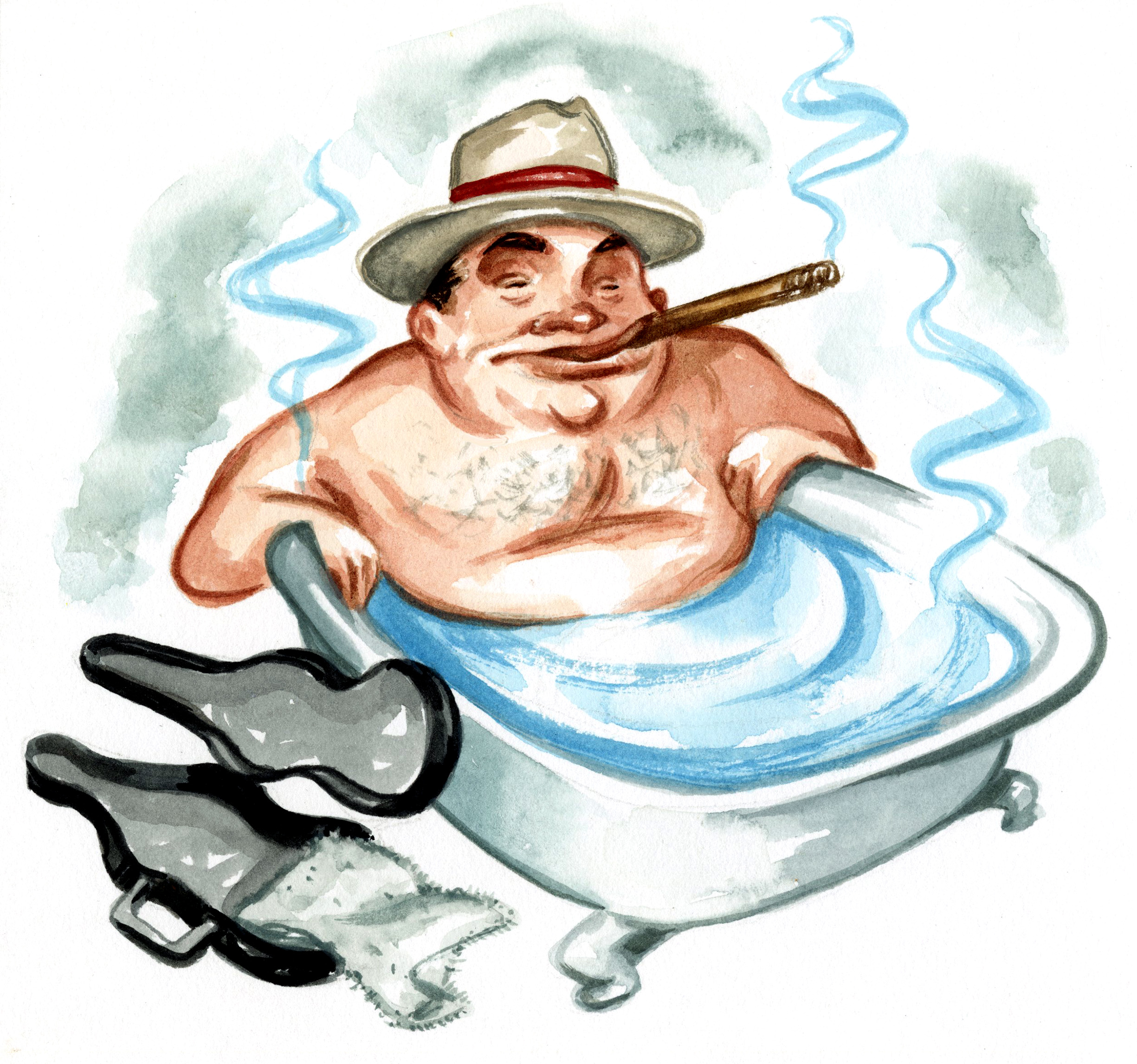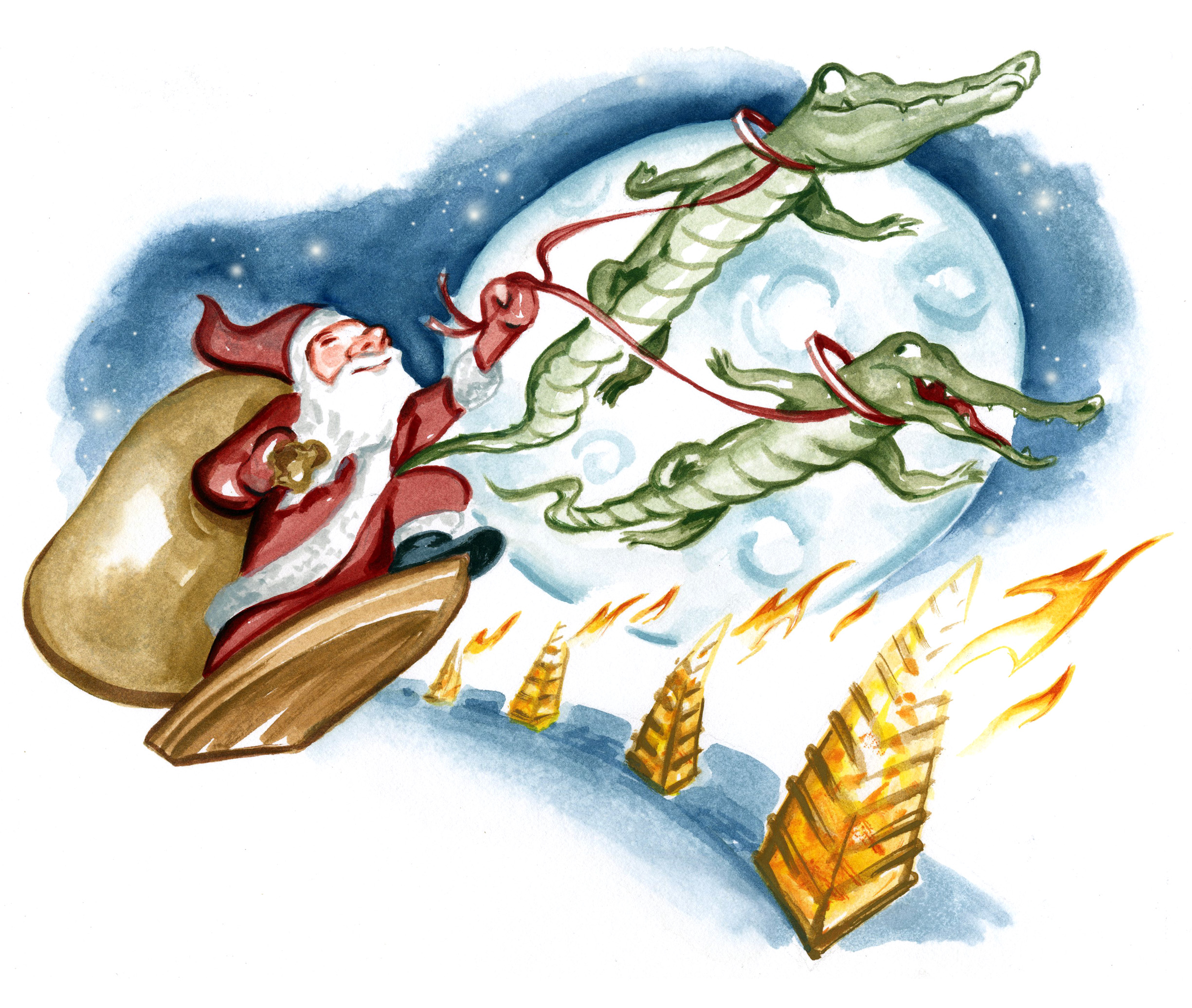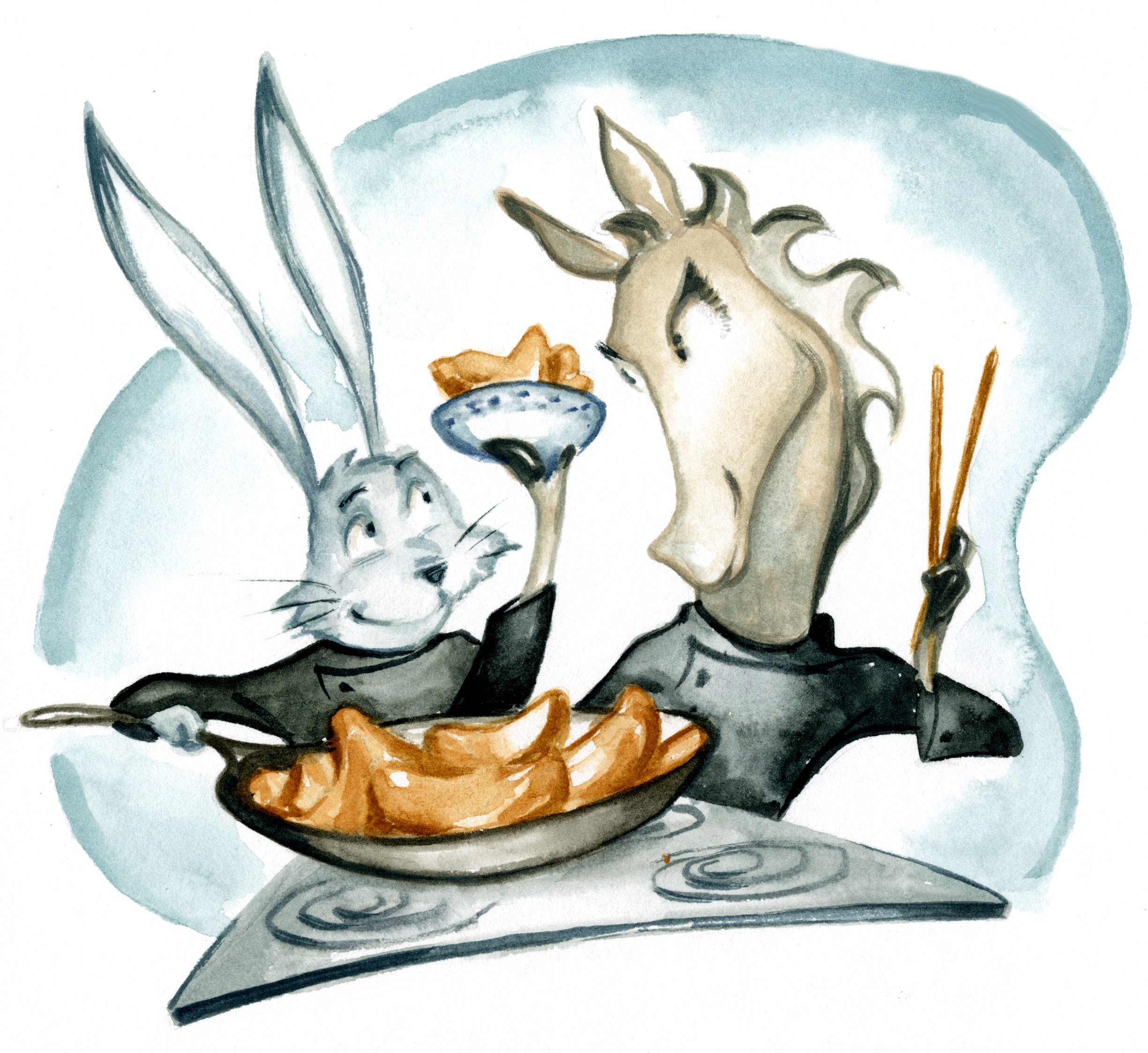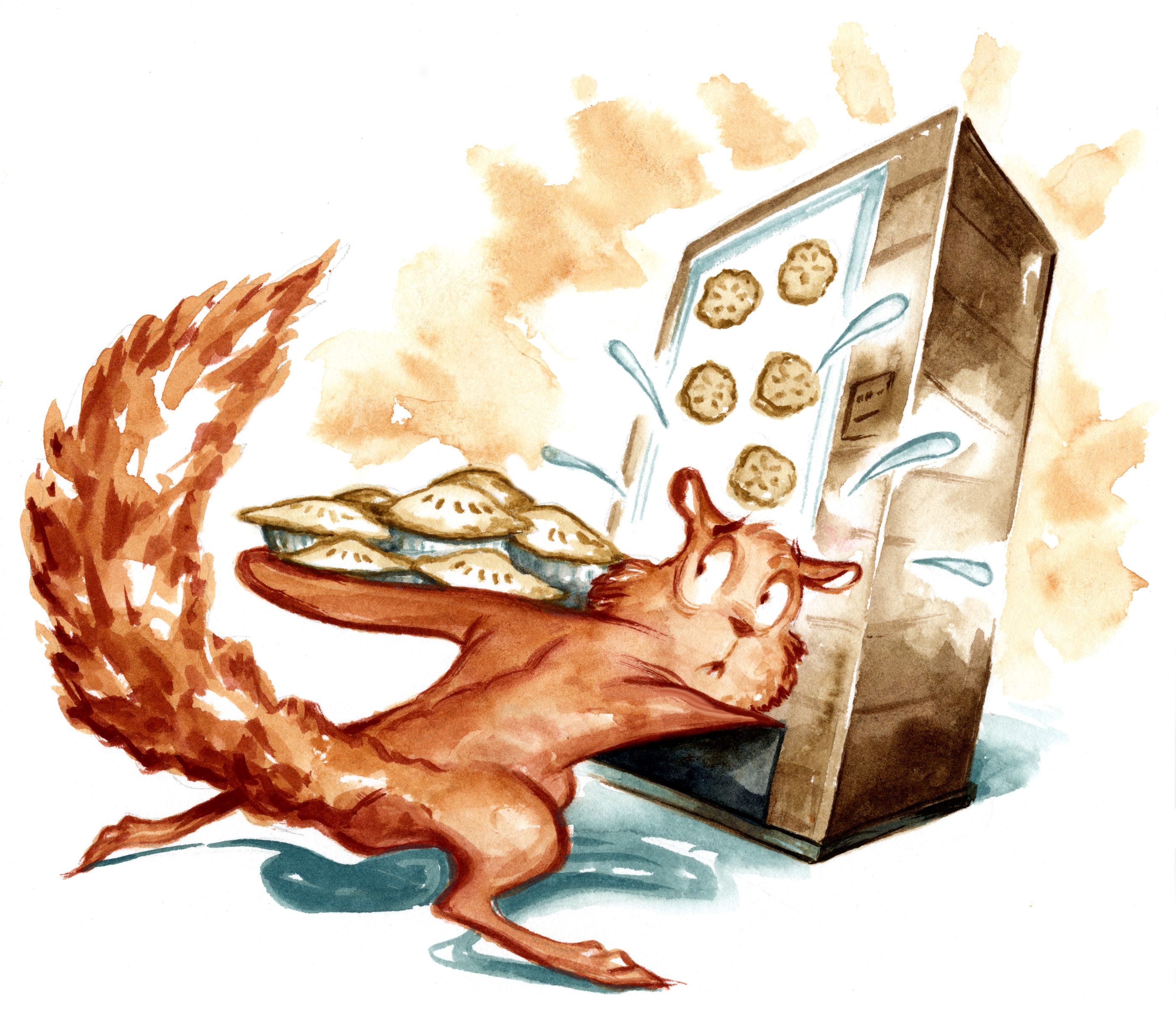OPENING
Georgia
A Southern Rock Revival
Strike a tuning fork against the floor of Capricorn Sound Studios, and you can still hear reverberations of the “Macon sound.” In 1969, local impresario Phil Walden heard Duane Allman bend guitar notes that defied physics, and built a studio around him. Soon enough, ax slingers trailing long corn-silk hair made the pilgrimage to the geographical navel of Georgia with hopes of cutting a hit track—Wet Willie, the Dixie Dregs, the Marshall Tucker Band. “We longhairs stuck together,” says producer and keyboardist Paul Hornsby. “I take pride that we created a whole new genre of music: Southern rock.” The downtown studio also became known as an oasis of interracial cooperation in an otherwise divisive era. “It was this color-blind place,” says Jerry Williams, a black vocalist and producer known as Swamp Dogg who recorded there. Capricorn closed in the late 1970s, and the building fell into disrepair and stayed shuttered for decades. Now, Mercer University in Macon has restored it to its vintage glory, rolling out fresh shag carpeting and rehanging psychedelic art in the greenroom. Recording equipment includes both state-of-the-art digital and old-school analog modeled on the original. Young and seasoned bands alike can reach for that ’70s vibe, or book the studio to pioneer something new. The renovated building will also function as a “music incubator” for the university, with thirteen rehearsal rooms and an exhibition space featuring a digital catalogue of songs recorded during the heyday. The grand reopening is December 3, a day of live music and free tours. That night, an all-star lineup of Capricorn alumni including Jimmy Hall, Randall Bramblett, Chuck Leavell, and John Bell take the stage at Macon City Auditorium, fifty years after Capricorn first rocked Georgia, and the nation. capricorn.mercer.edu
OUTDOORS
Alabama
The Birds of Winter
“A crane marsh,” wrote the conservationist and author Aldo Leopold, “holds a paleontological patent of nobility, won in the march of aeons.” Soaring praise for a bird, but he wasn’t rhapsodizing about some garden-variety sparrow. A whooping crane stands about five feet tall—the continent’s tallest bird—and has white plumage, a superhero-mask patch of red, and an NBA-worthy wingspan that can reach seven and a half feet; an endangered species, its entire population dwindled to less than two dozen in 1941 but has gradually rebounded to more than eight hundred. This season, you can spot a few rare whooping cranes in their northeastern Alabama wintering grounds, along with thousands of their slightly smaller and far more abundant cousins sandhill cranes, at the annual Festival of the Cranes, January 11–12 at the 35,000-acre Wheeler National Wildlife Refuge, along the banks of the Tennessee River in Decatur. A heated observation building with one-way glass allows “craniacs” to ogle the birds at close range. You might even catch some cranes dancing—bowing, dropping their wings, and hopping, often while trumpeting their raspy croak. “It’s usually younger birds,” says Teresa Adams, the refuge’s supervisory ranger, “trying to get attention.” fws.gov/refuge/wheeler
GETAWAY
Arkansas
A Gentle Simmer
Southern winters skew milder than those up North, but Southerners still suffer cold snaps and bouts of cabin fever. What better place to defrost and unclench than the bathhouses in and around Hot Springs National Park? The therapeutic 143-degree mineral waters of the celebrated resort town, in the Ouachita Mountains about an hour southwest of Little Rock, have drawn a roster of famous visitors, including Hernando de Soto, Jesse James, Al Capone, and Babe Ruth. The wintertime lull—tucked between leaf peeping and the start of Thoroughbred racing at the Oaklawn track in late January—makes for a placid getaway. “If you want to avoid the crowds, come then,” says KateLynn Parks of Visit Hot Springs. The no-frills Buckstaff Bathhouse, among the architectural gems along Bathhouse Row, has operated continuously since 1912 and offers whirlpool baths and full-body massage. The Arlington hotel, the state’s largest and a favorite of Capone’s in the 1930s, books several mineral-water guest rooms where spring-fed water is piped directly into your private bathtub. Quapaw Baths, the most updated of the antique spa houses, features a steam cave and four thermal pools under stained-glass skylights in a 1920s Spanish Colonial Revival building. Say aah. hotsprings.org

Tim Bower
FESTIVAL
Florida
Telltale Art
Even the author Marjorie Kinnan Rawlings, whose novel The Yearling brought the woods of Central Florida to life for countless young readers, couldn’t dream up a more quintessential spot to host the Florida Storytelling Festival (January 23–26) than the Lakeside Inn in Mount Dora. Fables unfold at the state’s oldest continuously operating hotel, where creaking rocking chairs line a long veranda, and yellow-and-white Victorian buildings on the shore of shining Lake Dora have greeted guests since 1883. Weekend-long festival pass holders can hone their own skills during workshops, putter along in a pontoon while a guide spins yarns on the lake, or sit in on a swap or a slam. A Listener’s Pass covers all evening ticketed concerts, when storytellers from across the country orate beneath ancient oaks trailing tendrils of Spanish moss. Pete Abdalla from nearby Seminole County will be there, recounting tall tales from his youth. “No matter what you’re hearing,” he says, “you can sit there and think of something that happened in your life that’s similar.” Soaking in a story is as simple as tuning in, he adds: “A good listener is somebody who does.” flstory.com
HISTORY
Kentucky
Lost Stories Found
Henry Clay may have been the leader and heartthrob of the Whig party, but it was his wife, Lucretia, who kept his life running while the secretary of state and three-time presidential candidate wooed constituents in the early nineteenth century. At their Ashland estate in Lexington, Lucretia raised their eleven children, operated a six-hundred-acre plantation, managed the dairy, and became something of a butter maven. Now historic Ashland is giving Lucretia—and eight other women who lived and worked there—their due in the new Women’s Voices tour. “Lucretia was tied to the social constraints of the time, but we go all the way to the Clays’ great-granddaughter Madeline Breckinridge, who was a suffragist of national importance,” says Cameron Walpole, Ashland’s manager of tours and education. (Among Breckinridge’s wisecracks: “Kentucky women are not idiots—even though they are closely related to Kentucky men.”) The tour celebrates the family’s achievements but doesn’t overlook their contradictions—Henry Clay said he disapproved of the system of slavery but owned more than one hundred enslaved people, including Charlotte Dupuy, whose powerful story the tour shares. In 1829, Dupuy sued Clay for her freedom. She lost and was jailed, and then Clay sent her to care for his grandchildren in New Orleans. A decade later, he freed her. “We don’t know why,” Walpole says. “But we know that she was a courageous woman, and that at great risk she took on the secretary of state, eventually gaining freedom for herself and her children.” henryclay.org
TRADITION
Louisiana
River Revelry
Instead of leaving out cookies by the fireplace, Cajun Country welcomes Santa Claus with actual fire—a miles-long row of bonfires on the levees lining the Mississippi River. “As children, we were taught it was to light the way for Papa Noël to find his way into the swamplands,” says John Folse, the heralded chef and author of The Encyclopedia of Cajun & Creole Cuisine who grew up in St. James Parish, the epicenter of the tradition started by early German and French settlers. As a child, Folse gathered wood and helped make tepee-shaped piles up to twenty-five feet high, spaced about two hundred yards apart on the levee. On Christmas Eve, families congregated and cooked in the glow of roaring flames. “Everyone around each bonfire made a different gumbo,” Folse says. “My family’s was wild game—smoked rabbit, duck, or whatever came off the swamp floor ‘pantry.’” After eating and attending midnight church services, families walked along the blazing path. “The fires had died down after Mass,” Folse says, “but we used the warmth of the embers to get back home.” Today, Gray Line New Orleans organizes a Christmas Eve tour to view the bonfires, which still resonate in generations of Louisianans’ holiday memories. graylineneworleans.com

Tim Bower
OUTDOORS
Maryland
How Does Your Garden Glow?
A decade ago in little Frederick, in western Maryland, a doctor named Peter Kremers grew frustrated with what he describes as the stagnant cesspool of Carroll Creek—an algae-filled stream designed to mitigate storm runoff in the center of town. “It was a flood control project that went awry,” Kremers says, “and it smelled.” An amateur gardener, Kremers prescribed a plant program, and in 2012 he founded Color on the Creek, a nonprofit group that now tends the stream and fills it with four thousand hardy lilies, irises, cattails, reeds, and other water-filtering aquatic plants each April through October. But what to do during the off-season? A floating festival of lights. The doctor’s second stroke of small-town-revival genius, Sailing through the Winter Solstice, decks the waterway with twenty-foot-tall twinkle-light-strewn model boats. The shining armada sets sail the weekend before Thanksgiving and lights up the creek through February 8. Volunteers create the festive vessels, which last year included what looked like a miniature Viking ship. coloronthecreek.com
OPENING
Mississippi
Life Aquatic
One of the more peculiar chapters of Hurricane Katrina’s deadly landfall in 2005 took place in Gulfport, where a massive storm surge laid waste to the privately owned Marine Life aquarium, in the process washing eight bottlenose dolphins from their pool into the debris-ridden waters of the Gulf of Mexico. (Unprepared for life in the wild, they were soon rescued.) In a sense, things will come full circle when the gleaming new one-million-gallon Mississippi Aquarium opens to the public in Gulfport early in 2020, putting an exclamation point on the coast’s recovery from both Katrina and the cataclysmic BP oil spill that followed five years later. Laid out in four exhibit buildings linked by curving, landscaped pathways and boardwalks on almost six beachfront acres, the nearly $100 million facility focuses on conservation and will spotlight some three hundred species of freshwater and saltwater creatures from Mississippi and points beyond—from river otters to American crocodiles to catfish. The aquarium is designed for plenty of interaction, with touch pools, an aviary, and a thirty-foot-long acrylic tunnel that puts visitors smack dab in the middle of the main “oceanarium” tank, with sea turtles and sharks swimming above, beside, and below. msaquarium.org
OPENING
North Carolina
Mountain Views
Beginning in 2017, guest curator Jason Andrew of the recently reopened Asheville Art Museum hit the road to visit the fifty outstanding painters, photographers, sculptors, weavers, and filmmakers who are part of the museum’s Appalachia Now exhibition (through February 3). “The overall theme is that Appalachia has outgrown its regionalism,” Andrew says. “Now everyone is connected with a tap on a mobile phone, and the diversity and the magnitude of the art-making in the region have expanded.” But the work is also rooted in the places the artists call home. Elizabeth Brim, a Penland School of Craft blacksmith, uses classic ironwork techniques to create intricate sculptures of flouncing tutus and billowing rhododendrons. Betty Maney, a Cherokee basket maker, weaves split-white-oak baskets in the tradition of her Native American ancestors, except in miniature. As it happens, the museum’s opening in the fall came as the new Kimpton Hotel Arras officially unlocked its doors a block away, transforming the former BB&T Building—the tallest building in Western North Carolina—into a 128-room boutique hotel and another indicator of Asheville’s ongoing popularity. All the more reason for a visit—and an opportunity to get to know the modern mountain South better. “I think that Appalachia, while its roots are deep,” says Andrew, “is deserving of a more nuanced narrative.” ashevilleart.org
FOOD
South Carolina
Charleston Chinese
It took a call from a chopstick company for Shuai Wang’s father to grasp his son’s success. Sure, the chef has been written up in national magazines and was named a James Beard Award semifinalist, but after he placed a large order for chopsticks with a business owner who works with his father’s Asian grocery store in Connecticut, his dad finally took notice. “The guy told him, ‘I didn’t realize your son was such a big deal,’” Wang says. “In Asian culture, your parents want you to become a doctor or an attorney. But I think that was the first time my dad recognized that I’d chosen the right career.” Charlestonians have known it since 2014, when Wang and his wife, Corrie, fired up their food truck, Short Grain. Their rice bowls and karaage (Japanese fried chicken) had Lowcountry foodies queuing wherever the roving kitchen on wheels parked. Now, just up Spruill Avenue in North Charleston, Jackrabbit Filly—named for the couple’s Chinese zodiac signs of hare and horse—is their long-awaited brick-and-mortar, a bright and playful spot where bunny illustrations hop along yellow wallpaper. The fan-favorite O.G. bowl, a heavenly pile of sticky rice, pickled vegetables, and seasonal local fish, will anchor the lunch menu, but diners can also discover new homages to Wang’s native China such as ma la xiang guo, a dry hot pot, and his mother’s dumpling recipe. Mama Wang, Shuai’s first culinary influence, couldn’t make it to Charleston to taste the first batch. “They work seven days a week” at the grocery, Wang says. “She joked that I just wanted her down here to make the dumplings herself.” jackrabbitfilly.com

Tim Bower
STYLE
Tennessee
Sleeping Sound
“When people are in the hotel, we want them to know without a doubt that they’re in Memphis,” says McLean Wilson, owner of the newly opened Central Station Hotel on South Main Street. The lobby boasts an extensive vinyl library, where a DJ spins records at a booth carved from a refurbished organ. Steps away, an intimate listening room plays ten-minute podcasts that are better than any brochure stand, covering topics such as the city’s punk music scene and the lasting power of B. B. King. The hotel is connected to an Amtrak station and marks a midpoint of an active rail line linking New Orleans and Chicago, and subtle touches throughout honor the spirit of travel. Memphis restaurateurs Andy Ticer and Michael Hudman, of Andrew Michael Italian Kitchen and a half dozen other spots, run the French brasserie, Bishop, as well as the lobby bar, 8 & Sand, named after a bygone greeting used by conductors. (Sip on the Sazerac riff called End of the Line.) Art in the guest rooms includes framed shots by local photographer Jamie Harmon, who rode the rails and captured images of towns and stations along the way. Memphis-made EgglestonWorks speakers in each room pipe in local tunes as funky as those of Booker T. and the M.G.’s and as familiar as the songs of Elvis, whose adopted hometown celebrates what would have been his eighty-fifth birthday in January. centralstationmemphis.com
FOOD
Texas
Life of Pie
Jennifer Berdoll knows when the University of Texas football team has played a home game just by looking at her vending machines. Off Highway 71 in Cedar Creek sits a giant squirrel statue fronting Berdoll Pecan Candy & Gift Company, and the two pecan pie dispensers Berdoll fills with full-size pies. “We always have great sales when people are headed back to Houston from a game and stop for a snack,” she says. Her family got into the pecan business forty years ago, selling shell-on nuts from their garage, then building a shop to sell baked goods. The company became so successful, it made Berdoll a bit, well, nuts—so she installed the two vending machines to meet the store’s after-hours demand. “One Thanksgiving,” she says, “I went to restock one machine, and all the parking spots were full and there was a line.” Ever since, she has kept the machines stocked twenty-four hours a day, every day except Easter and Christmas, and she estimates that between the store and machines, she sells ten thousand pies during the holiday season. If you’re after the best Texas treat twenty-five dollars can buy, prepare to start counting change (although thankfully, the machines accept credit cards, too). berdollpecanfarm.com

Tim Bower
MUSIC
Virginia
Welcome to the Fold
The Carters are revered today as country music’s first family, but there was a time when the patriarch worried that his folk-gospel sound would die with him. “He thought our music would be forgotten,” says Rita Forrester, A. P. Carter’s granddaughter and the executive director of the Carter Family Memorial Music Center in Hiltons (a town in the Poor Valley near the Virginia-Tennessee border). “My mother promised him that she would see that his music lived on.” Since 1974, Forrester—and her mother, Janette Carter, before her—have made good on that promise with Saturday night concerts at the Carter Family Fold, where generations of Carters grew up. A museum occupies what was once a country store, and next door stands a low-slung performance venue that prohibits both alcohol and electric instruments. “We keep it old-timey and mountain-style,” Forrester says. The Fold has hosted the likes of Waylon Jennings and Johnny Cash, but an annual Christmas Show (December 14) gives the next generation a stage. “These are the children who will pass our music down,” Forrester says of the Junior Appalachian Musicians, student players from Independence, Virginia. In lieu of an admission fee, audience members bring a canned food donation for a local food bank—and a dish to share at the finger-food potluck. carterfamilyfold.org
OPENING
Washington, D.C.
Center Stage
“The opposite of a concert hall”: That’s how the president of the Kennedy Center, Deborah Rutter, has described the center’s newly unveiled $250 million annex, a cultural hub called the REACH. Designed by the architect Steven Holl, anchored by three angular white concrete pavilions housing glass-walled studios and rehearsal and performance spaces along the Potomac River, and tied together by lawns and walkways, the expansion aspires to be an antidote of sorts to the black-tie, opening-gala image of the performing-arts mother ship to which it’s connected—casual, unpretentious, and often free of charge. Officials envision the REACH as the kind of attraction where visitors drop by to watch a dance troupe rehearse, or students sit in on an improv workshop. Its opening festival this fall gave an indication of the cultural grab bag the center plans to program: everything from a master class with a New York City Ballet principal dancer to a concert by New Orleans musician Trombone Shorty to tai chi workshops to a DJing workshop to a sing-along outdoor screening of The Muppets Movie. On January 18, catch a star on the rise when Jazzmeia Horn, a Grammy-nominated jazz vocalist from Dallas, will perform. reach.kennedy-center.org
OUTDOORS
West Virginia
All Downhill From Here
At more than a quarter mile, Blackwater Falls State Park’s sledding slope is the longest—and likely fastest—in the East. “Speeds of twenty to twenty-five miles per hour are pretty common,” says Matt Baker, the park’s superintendent. It’s no wonder, then, that sledding has become the main winter attraction. Blackwater Falls even upped its game, adding a fifteen-hundred-foot people mover to transport sledders back up the hill on an eight-minute scenic ride through the white-dusted red spruces and hemlocks. “We’ve eliminated the worst part of sledding, which is the walk back up,” Baker says. The slope is open Thursdays through Sundays all winter (the snow machines help). Baker’s tips: Come early for a daytime session—“There are no reservations, and tickets usually sell out by eleven.” Warm up with hot chocolate at the campfires. And try a Friday or Saturday nighttime session, when you can fly over powder beneath bright winter stars. wvstateparks.com
—Candice Dyer, Kinsey Gidick, Mike Grudowski, CJ Lotz, Caroline Sanders, and Dacey Orr Sivewright







